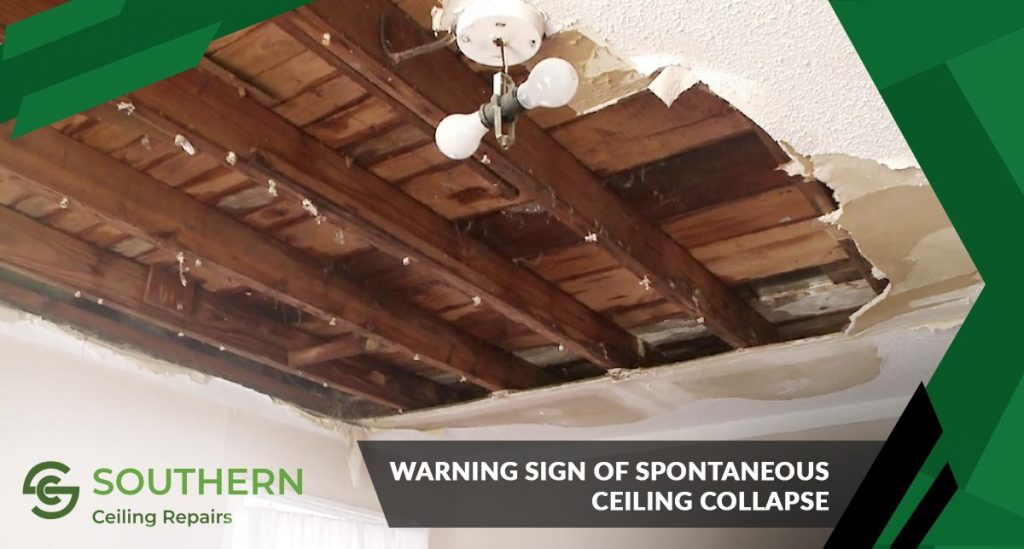Ceiling Falling Down: Warning Sign of Spontaneous Ceiling Collapse

Ceiling collapses are every homeowner’s nightmare, and for good reason. A falling ceiling not only damages property but also poses significant risks to personal safety.
Understanding the causes, recognising warning signs, and knowing who to call in case of emergency are vital for preventing disasters. In this comprehensive guide, we’ll delve into the reasons behind ceiling collapses, highlight warning signs to watch out for, outline steps to take during and after a collapse, and provide practical strategies for preventing future incidents.
Plus, for residents in Western Australia, knowing reliable services like gyprock ceilings Albany by Southern Ceiling Repairs can offer peace of mind and swift assistance when needed.
Causes of Ceiling Collapses
Imagine this: you’re relaxing in your living room when suddenly, with a deafening crash, your ceiling gives way. What could cause such a terrifying event?
Several factors can contribute to a ceiling collapse, including age, poor installation, water damage, or overloading of the ceiling space. In older homes, structural issues may weaken the ceiling’s integrity over time, making it susceptible to collapse.
Additionally, water damage from leaks or flooding can gradually deteriorate the ceiling, increasing the risk of failure. The weight of heavy items stored in the attic can also strain the ceiling, eventually leading to a catastrophic collapse.
Warning Signs of Impending Collapse
Before a ceiling comes crashing down, it often gives subtle hints of its impending demise. These warning signs should never be ignored:
- Audible Cracks
If you hear loud cracking sounds emanating from your ceiling, it’s a clear indication that something is amiss. These noises could signal structural weaknesses that may eventually result in a collapse. - Sagging or Drooping
Take a moment to inspect your ceiling. Do you notice any areas where the plasterboard or cornice is sagging or drooping?
This could be a sign that the ceiling is under stress and at risk of collapsing. - Visible Damage
Keep an eye out for visual cracks or “nail pops” on the ceiling. These small circular bulges may seem insignificant, but they could be early warning signs of a larger problem lurking above.
Dealing with a Ceiling Collapse
If you ever find yourself facing the nightmare scenario of a falling ceiling, here’s what you need to do:
- Evacuate Immediately
Your safety is paramount. Leave the area as quickly as possible to avoid injury from falling debris. - Notify Authorities
Contact your landlord or property manager immediately to report the incident. They will need to arrange for professional assistance to assess the damage and make necessary repairs. - Stay Away
Resist the urge to enter the affected room until it has been thoroughly inspected and deemed safe by professionals. There may be hidden dangers lurking amidst the rubble.
If you notice warning signs of a potential collapse, take proactive steps to address the issue:
Seek Professional Help
Don’t try to tackle the problem on your own. Contact a qualified ceiling repair specialist to inspect the issue and recommend appropriate measures.
Inform Your Landlord
If you’re a tenant, it’s crucial to notify your landlord or property manager about the problem promptly. They have a legal obligation to ensure the safety of the property and its occupants.
Ceiling Collapse Repair and Prevention
Repairing a collapsed or damaged ceiling is not a DIY project. It requires the expertise and equipment of a professional ceiling repair company.
These specialists have the skills to assess the damage accurately and implement effective repairs to restore the ceiling’s integrity. To prevent future ceiling collapses, homeowners should take the following precautions:
- Regular Inspections
Schedule regular inspections of your ceilings, especially if you live in an older home. Catching problems early can prevent costly and dangerous collapses down the line. - Proper Installation
When installing plasterboard, ensure it is done correctly and securely. The use of adhesive can help reinforce the bonds and prevent future failures. - Avoid Overloading
Be mindful of the weight you place on your ceiling. Avoid overloading the attic or ceiling space with heavy items that could strain the structure.
A falling ceiling isn’t just a bad dream; it’s a danger to you and your property. By knowing what causes it, spotting the signs, and being proactive, you can reduce the chances of a disaster.
Safety should always be your top priority. If your ceiling collapses or shows warning signs, get out of there, tell your landlord, and call for help from professionals right away.
Don’t put off dealing with it—take steps now to keep yourself and your home safe. Remember, for reliable ceiling repairs Denmark, trust Southern Ceiling Repairs in Western Australia.

